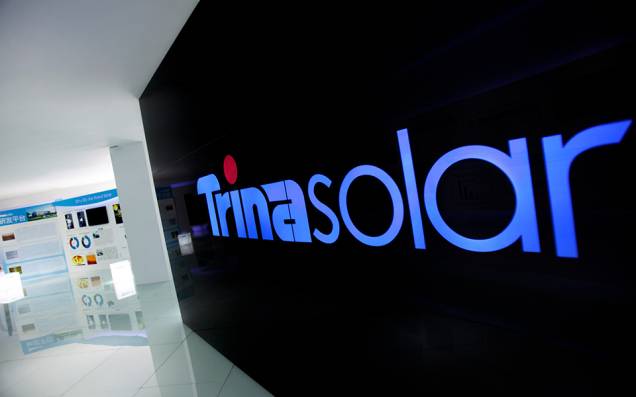
Yet Another Record For Trina Solar
Trina Solar has announced it has set a new record of 24.13% total-area efficiency for a large-area n-type mono-crystalline silicon Interdigitated Back Contact (IBC) solar cell.
Through moving the front contact grids to the rear of the device, IBC cells have a number of advantages over front-contact cells. These include the elimination of metal shading on the front surface, reduced resistive losses, enhanced rear optics and light trapping; plus a simplified cell interconnection system.
Trina says IBC cells are particularly suitable for applications where high power density is more important than LCOE (Levelised Cost of Electricity).
Trina’s new 156×156 mm monocrystalline solar cell attained a total-area efficiency of 24.13% (measured without aperture); with this performance being independently verified by the Japan Electrical Safety & Environment Technology Laboratories (JET).
” Over the last few years, our R&D team has managed to continuously improve the efficiency of our n-type IBC solar cells, pushing the limits and surpassing our previous records, and approaching very closely to the performance of our best small-area laboratory cell developed in collaboration with ANU three years ago.” said Trina’s Vice-President and Chief Scientist, Dr. Pierre Verlinden.
That previous record, announced in February 2014, was a 24.4% aperture efficiency for a 125mm by 125mm cell.
“Total-area efficiencies are always lower than aperture-efficiencies, due to efficiency losses related to the edges of the cells and electrical contact areas,” states the company.
The latest achievement is the latest in a series of many. Trina says its State Key Laboratory of PV Science and Technology has broken 15 world records related PV cell efficiency and module power.
Among them, Trina Solar set a new polycrystalline solar panel efficiency record of 19.86% last year. Late in 2016, the company announced a new efficiency record of 22.61% for a monocrystalline silicon Passivated Emitter and Rear Cell (PERC) device.
Founded in 1997 by Gao Jifan, Trina is a Tier 1 manufacturer that has racked up more than 23GW of shipments.
Trina Solar panels are a common sight on Australian commercial and residential rooftops – you can browse more than 100 Australian Trina solar panel reviews on SolarQuotes.
Among local high-profile solar power systems using the company’s panels is the 1.22MW installation at the University of Queensland; consisting of more than 5000 polycrystalline Trina Solar modules.

 RSS - Posts
RSS - Posts



I saw a recent reference on a BBC website to an Australian Startup called ‘Smartflower”. Has anyone on Solarquotes examined the “Smartflower”product?
Based on what I could find on Google the product looks very good but the devil is always in the detail.
The only SmartFlower I could find online is made in Austria, not Australia.
Looking at the US SmartFlower site, one of the first things I saw was a claim that operating at up to 10 degrees Celsius cooler made the Sunflower able to deliver 5-10% more power than rooftop systems. Maybe SmartFlower will be able to convince me that is possible when 10 degrees cooler is generally around 4% more efficient and “up to” 10 degrees cooler is not 10 degrees cooler, but until they do I will simply assume the American distributors at least are either incompetent or liars. (Well, actually, I’ll just regard them as liars personally, but in public I’ll pretend it could just be incompetence.)